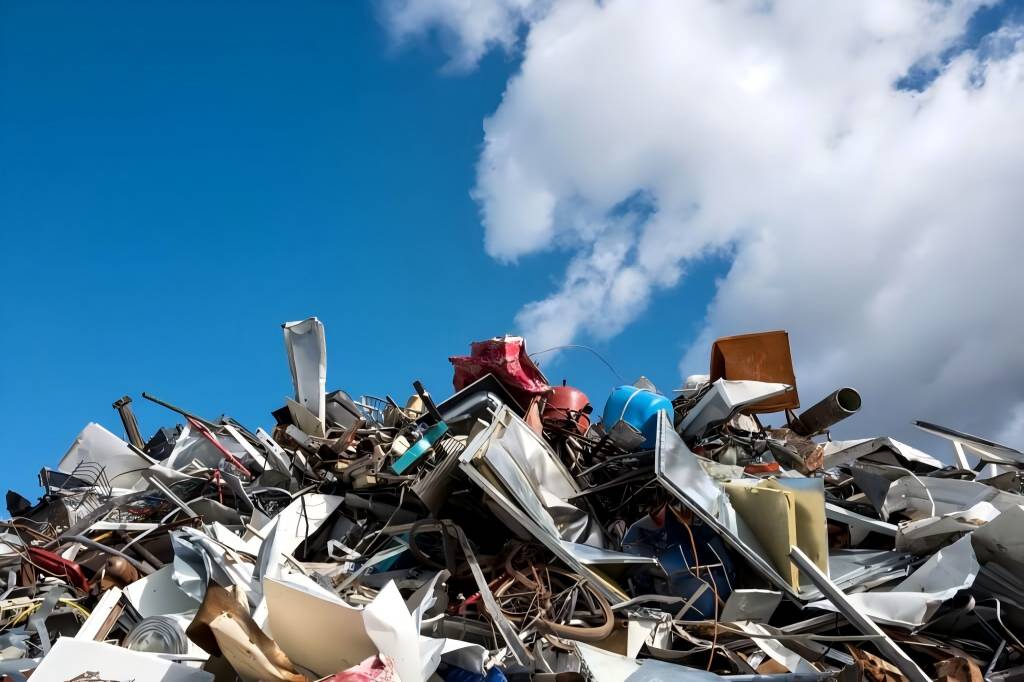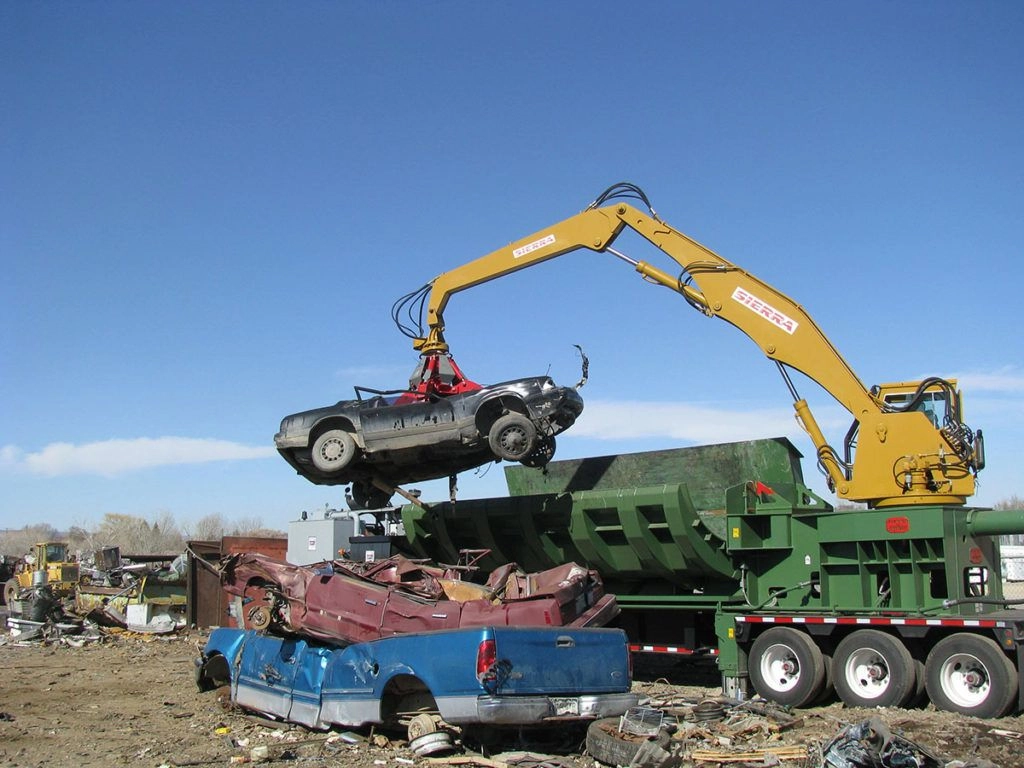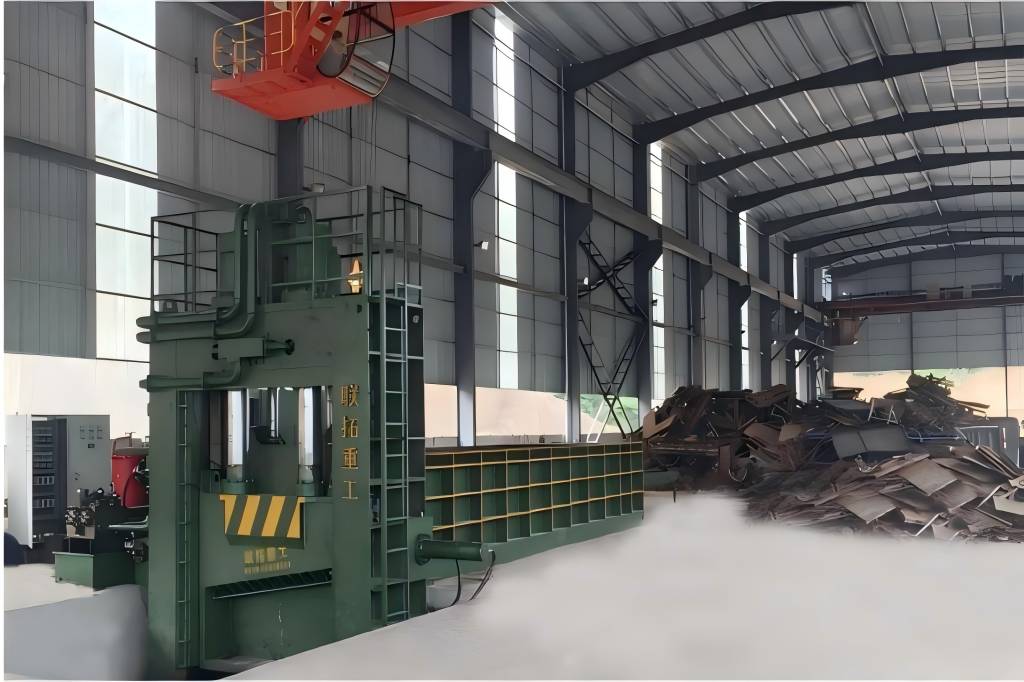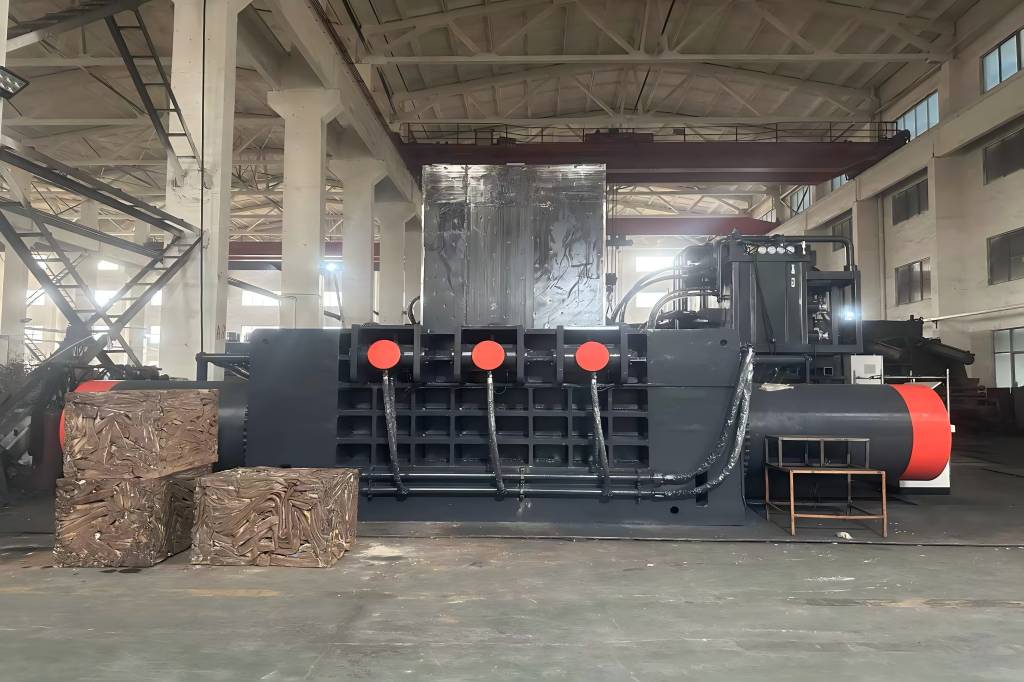As global attention shifts toward sustainability, the practice of metal scrapping has become an essential component of waste management and recycling.
With approximately 52 million tons of scrap metal projected to be recycled in the United States in 2024, the metal scrapping industry plays a vital role in conserving natural resources, reducing energy consumption, and minimizing environmental impact.
This article explores the best methods for scrapping metal, focusing on three primary approaches: investing in a metal baler, sending scrap to a recycling facility, and utilizing a mobile scrap collection service.
Understanding Metal Types
Before diving into scrapping methods, it’s crucial to understand the types of metals involved. Metals are generally categorized into two main groups: ferrous and non-ferrous.
Ferrous Metals
These magnetic metals have iron in them. Typical instances are steel and cast iron, which are extensively employed in the manufacturing, automotive, and construction sectors.
According to the Institute of Scrap Recycling Industries (ISRI), ferrous metals accounted for over 60% of the total scrap recycled in 2023. Ferrous metal recycling entails melting the metals down and repurposing them as new goods. Approximately 74% less energy is needed to recycle ferrous metals than to turn iron ore into new steel.
Non-Ferrous Metals
These metals include brass, copper, lead, and aluminum; iron is not present in any of them. Because of their special qualities and uses, non-ferrous metals are frequently more valuable than ferrous metals.
For instance, recycling aluminum uses around 95% less energy than making it from unprocessed bauxite ore. In 2024, over 4.2 million tons of aluminum are projected to be recycled in the U.S., underscoring the strong market for non-ferrous scrap.
Statistics and Trends in Metal Recycling
To illustrate the current trends in metal recycling, the following table summarizes key statistics:
| Year | Total Scrap Recycled (Million Tons) | Ferrous Metal Recycling (%) | Non-Ferrous Metal Recycling (%) | Average Price per Ton (Ferrous) | Average Price per Ton (Non-Ferrous) |
| 2021 | 50 | 61 | 39 | $300 | $1,800 |
| 2022 | 51 | 62 | 38 | $320 | $1,900 |
| 2023 | 52 | 60 | 40 | $350 | $2,000 |
| 2024 | 52.5 | 63 | 37 | $370 | $2,100 |
Key Insights:
- Increasing Demand: The slight increase in total scrap recycled from 2023 to 2024 indicates growing awareness and demand for recycling.
- Price Trends: The average prices for both ferrous and non-ferrous metals have shown an upward trend, highlighting the economic benefits of recycling.
- Shifts in Composition: The percentage of ferrous vs. non-ferrous recycling reflects market fluctuations, with non-ferrous metals gaining a bit more traction in the recycling stream.
Methods for Scrapping Metal
Now that we understand the types of metals and the current trends in recycling, let’s delve into the specific methods for scrapping metal, each with its own practical steps, benefits, and considerations.
1. Investing in a Metal Baler
An apparatus called a metal baler is used to compress and bundle scrap metal into bales for more efficient storage and transportation.
Practical Steps:
- Research and Purchase: Assess the volume of scrap you generate to choose an appropriate baler size and type.
- Installation: Set up the baler in a suitable location that allows for easy access to scrap input and output.
- Operation: Make sure the baler is operating correctly by feeding the metal into it in accordance with the manufacturer’s instructions.
Benefits:
- Efficiency: Compacting scrap reduces space requirements and makes it easier to transport.
- Increased Value: Baled scrap often fetches higher prices at recycling facilities.
Considerations:
- Initial Investment: Purchasing a baler requires upfront capital, so consider your long-term needs.
- Maintenance: To guarantee the baler runs effectively, regular maintenance is required.
2. Sending Scrap to a Recycling Facility
In this approach, scrap metal is shipped to a recycling center so that it can be sold and processed.
Practical Steps:
- Sorting: Separate different types of metals to maximize value. For example, keep aluminum, copper, and ferrous metals distinct.
- Transport: Pack the separated metal into a car and drive it to the recycling center.
- Documentation: Ensure you have any necessary paperwork ready, including ID and a receipt of the scrap.
Benefits:
- Convenience: This method is straightforward, especially for individuals or small businesses that don’t generate large quantities of scrap.
- Expert Processing: Recycling facilities have the equipment and expertise to handle and process scrap efficiently.
Considerations:
- Transportation Costs: Factor in the cost of transport to the facility when calculating overall returns.
- Market pricing: To make sure you are receiving a fair bargain, be informed of the scrap market pricing at the moment.
3. Utilizing a Mobile Scrap Collection Service
A mobile scrap collection service involves hiring professionals to come to your location and collect scrap metal.
Practical Steps:
- Find a Service: Research local mobile scrap collection services to find one that fits your needs.
- Plan a Pickup: Decide on a time that works best for the collection service to visit your place.
- Get Ready for the Pickup: Make sure the scrap is available and prepared for picking up.
Benefits:
- Convenience: This method saves time and labor, as the service handles all the heavy lifting.
- Immediate Payment: Many services offer payment on the spot, providing immediate financial returns.
Considerations:
- Service Fees: Some services may charge a fee, so clarify the terms before proceeding.
- Reputation: Choose a reputable service to ensure fair pricing and responsible recycling practices.




